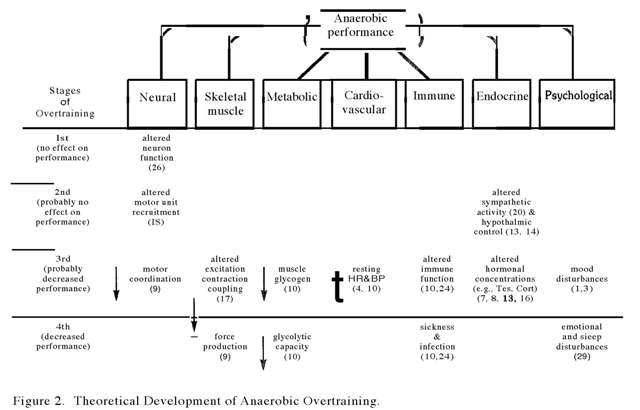Principles of Strength Training
The major objective of training is to cause biologic adaptations in order to improve performance of a specific task. This requires adherence to a carefully planned and executed training program. Attention is focused on factors such as training frequency and length of workouts, type of training, speed, intensity, duration, repetition of the activity and appropriate competition. Specifically for strength training, acute program variables include choice of exercise, order of exercise, number of sets, rest periods (between sets and between training sessions) and load (e.g., 1 RM or 10 RM). Although these factors vary depending on the performance goal, it is possible to identify several principles.
To improve performance and to bring about a training change, an exercise overload must be applied (overload principle). The appropriate overload for each person can be achieved by manipulating combinations of training frequency, intensity and duration. Applied to training, specificity refers to adaptations in the metabolic and physiologic systems that are dependent on the specific overload imposed (specificity principle). For example, strength-power training induces strength-power adaptations. Training benefits are optimized when programs are planned to meet the individual needs and capacities of the participants (individual differences principle). The beneficial effects of training are transient and reversible (reversibility principle).
Physiological Consequences of Training
The physiological adaptations to anaerobic or aerobic training are specific to the demands of the activity. Some of the most common adaptations for each type of training are listed in Table 2. The differences in adaptations for each type of training are specific to the demands of the respective activities. As a result, the physiological factors contributing to over training for either anaerobic or aerobic activities could potentially be quite different.

The capacity to Perform and persist in maximal exercise for a brief period of time, up to 60 seconds, is largely dependent on ATP generated by the immediate short term anaerobic energy systems. Anaerobic sports such as football, weightlifting and sprinting, rely almost exclusively on energy derived from the muscle phosphate pool. Developing the capacity of the ATP-PC energy system to the fullest is of paramount importance. The phosphate pool can be overloaded by engaging specific muscles in repeated maximum bursts of effort for up to five to 10 seconds. Because high energy phosphates supply energy for intense, intermittent exercise, only small amounts of lactic acid are produced and recovery is rapid. To improve capability for anaerobic energy release via the short term lactic acid energy system, the physiologic conditioning program must overload this aspect of energy metabolism. For example, with interval training, a longer work interval engages the aerobic systems, whereas shorter intervals place greater overload on the anaerobic energy systems.
